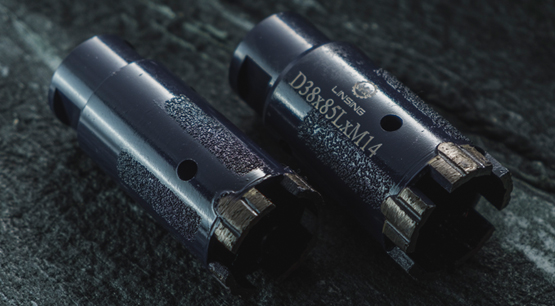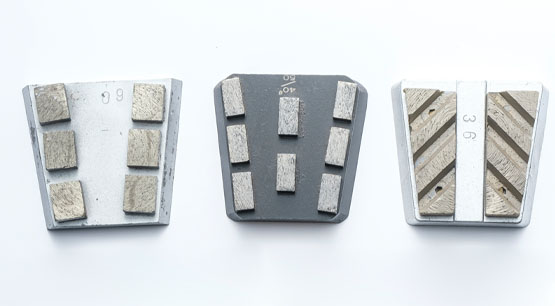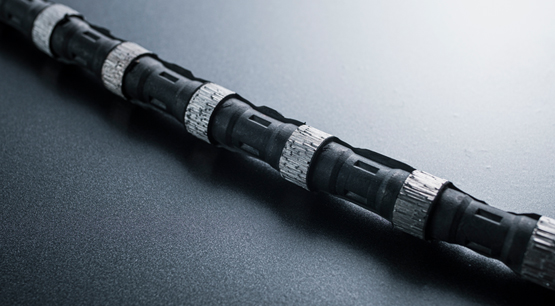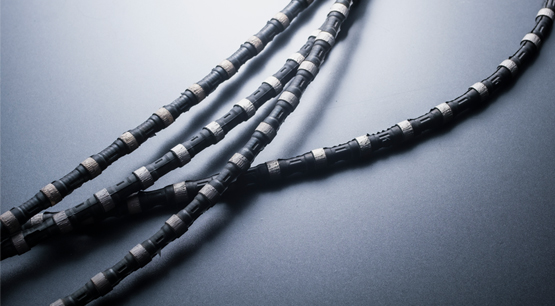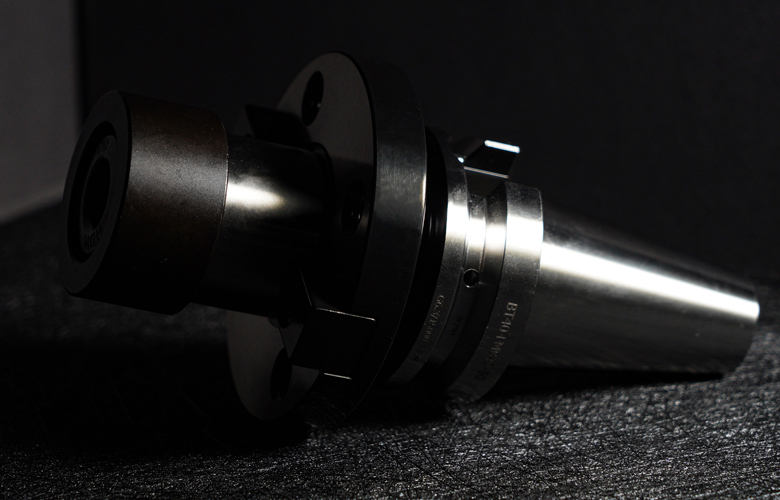Introduction
Diamond wire saws are essential tools for cutting through various types of stone, including marble and granite. These tools use a wire embedded with diamond segments, which grind through the stone as the wire is pulled back and forth. While the basic principle remains the same, diamond wire saws for marble and granite have distinct differences due to the varying properties of these stones. This article will delve into the specific characteristics, applications, and differences of diamond wire saws for marble and granite, providing a comprehensive understanding of their respective advantages and uses.
Characteristics of Marble and Granite
Before discussing the differences between the wire saws, it is crucial to understand the distinct properties of marble and granite:
Marble:
- Composition: Marble is primarily composed of calcite, a softer mineral.
- Hardness: It has a Mohs hardness of around 3-4, making it relatively soft and easier to cut compared to granite.
- Texture: Marble has a fine, homogeneous texture, which allows for smooth and precise cuts.
- Porosity: It is more porous, which can make it susceptible to staining and etching.
- Aesthetic Appeal: Known for its elegance and unique veining patterns, marble is often used in high-end architectural applications.
Granite:
- Composition: Granite is composed mainly of quartz and feldspar, with a variety of other minerals.
- Hardness: With a Mohs hardness of around 6-7, granite is significantly harder and more durable than marble.
- Texture: Granite has a granular texture, which can make it more challenging to achieve precise cuts.
- Porosity: It is less porous and more resistant to staining and etching.
- Aesthetic Appeal: Granite is valued for its durability and wide range of colors and patterns, making it a popular choice for countertops and flooring.
Differences in Diamond Wire Saws for Marble and Granite
Diamond Beads and Segments:
- Marble: The concentration of diamonds in the beads may be lower, and the spacing between beads can be wider to facilitate smoother cutting of the softer stone.
- Granite: The concentration of diamonds is higher, and the spacing between beads is closer to provide the necessary cutting power and durability for the harder granite.
- Marble: The diamond beads for marble cutting have a softer bond and smaller diamonds. The softer bond ensures that the diamonds are exposed quickly, allowing efficient cutting of the softer marble.
- Granite: The diamond beads for granite are made with a harder bond and larger diamonds. The harder bond ensures that the diamonds do not wear out too quickly when cutting through the harder granite.
- Hardness and Bonding:
- Concentration and Spacing:
Wire Core and Reinforcement:
- Marble: The core wire used for marble cutting may be thinner and less reinforced, as the material is easier to cut and does not put as much strain on the wire.
- Granite: The core wire for granite cutting is typically thicker and more reinforced to withstand the higher cutting forces and stress associated with cutting harder stone.
Cutting Speed and Efficiency:
- Marble: Diamond wire saws designed for marble cutting generally operate at higher speeds, as marble is easier to cut and allows for faster processing.
- Granite: The cutting speed for granite is slower to ensure precision and to prevent excessive wear on the diamonds and wire. The harder stone requires a more controlled and gradual cutting process.
Cooling and Lubrication:
- Marble: Cooling requirements for marble cutting are typically lower due to the softer nature of the stone and the faster cutting speeds. Water or a light coolant is usually sufficient.
- Granite: Cutting granite generates more heat due to the hardness of the material and slower cutting speeds. Effective cooling and lubrication are essential to prevent overheating and to prolong the life of the diamond wire. This often requires a continuous flow of water or a specialized coolant.
Blade Life and Maintenance:
- Marble: The diamond wire saws used for marble cutting generally have a longer lifespan because the material is softer and less abrasive. Maintenance requirements are lower, and the wear on the diamonds is minimal.
- Granite: Diamond wire saws for granite experience higher wear rates due to the stone's hardness. This necessitates more frequent maintenance and replacement of the diamond beads or segments to ensure optimal performance.
Practical Applications and Techniques
Marble Applications:
- Quarrying: Diamond wire saws are extensively used in marble quarries to extract large blocks of marble with minimal wastage. The ability to make precise and smooth cuts ensures the high quality of the extracted blocks.
- Slab Cutting: In slab cutting, diamond wire saws are used to slice marble blocks into slabs of varying thicknesses. The smooth texture and fine grain of marble allow for high-precision cuts.
- Sculpting and Artistic Works: Due to its softness and workability, marble is a preferred material for sculptors. Diamond wire saws enable detailed and intricate cuts required for artistic creations.
Granite Applications:
- Quarrying: In granite quarries, diamond wire saws are used to extract blocks of granite. The harder nature of granite requires robust and durable wire saws that can withstand the demanding conditions.
- Slab Cutting: Cutting granite into slabs involves using diamond wire saws designed for high durability and precise cutting. These slabs are then used for countertops, flooring, and other architectural applications.
- Architectural and Structural Uses: Granite's durability makes it suitable for structural applications, such as building facades and monuments. Diamond wire saws facilitate the cutting of granite into the desired shapes and sizes for these applications.
Advancements and Innovations
Improved Diamond Technology:
- Advances in diamond synthesis and bonding technology have led to the development of diamond beads with enhanced cutting efficiency and durability for both marble and granite.
- The use of higher-grade diamonds and innovative bonding materials ensures longer-lasting and more efficient cutting tools.
Automated and Computer-Controlled Saws:
- The integration of automation and computer control in diamond wire saws has improved precision, efficiency, and safety in cutting operations.
- Automated systems can optimize cutting parameters in real-time, adjusting speed, pressure, and cooling to achieve the best results for both marble and granite.
Environmental Considerations:
- Innovations in cooling and lubrication systems have led to more environmentally friendly cutting processes, reducing water consumption and the use of harmful chemicals.
- The development of more efficient diamond wire saws reduces energy consumption and minimizes waste, contributing to more sustainable quarrying and processing practices.
Conclusion
Diamond wire saws for marble and granite are tailored to the specific properties of these stones, ensuring optimal performance and efficiency in cutting operations. The differences in diamond bead composition, wire core reinforcement, cutting speed, cooling requirements, and maintenance reflect the unique challenges posed by each material. Understanding these differences enables the selection of the appropriate tools and techniques for various applications, from quarrying and slab cutting to sculpting and architectural projects. As technology advances, diamond wire saws continue to evolve, offering improved performance, precision, and sustainability in the processing of marble and granite.




